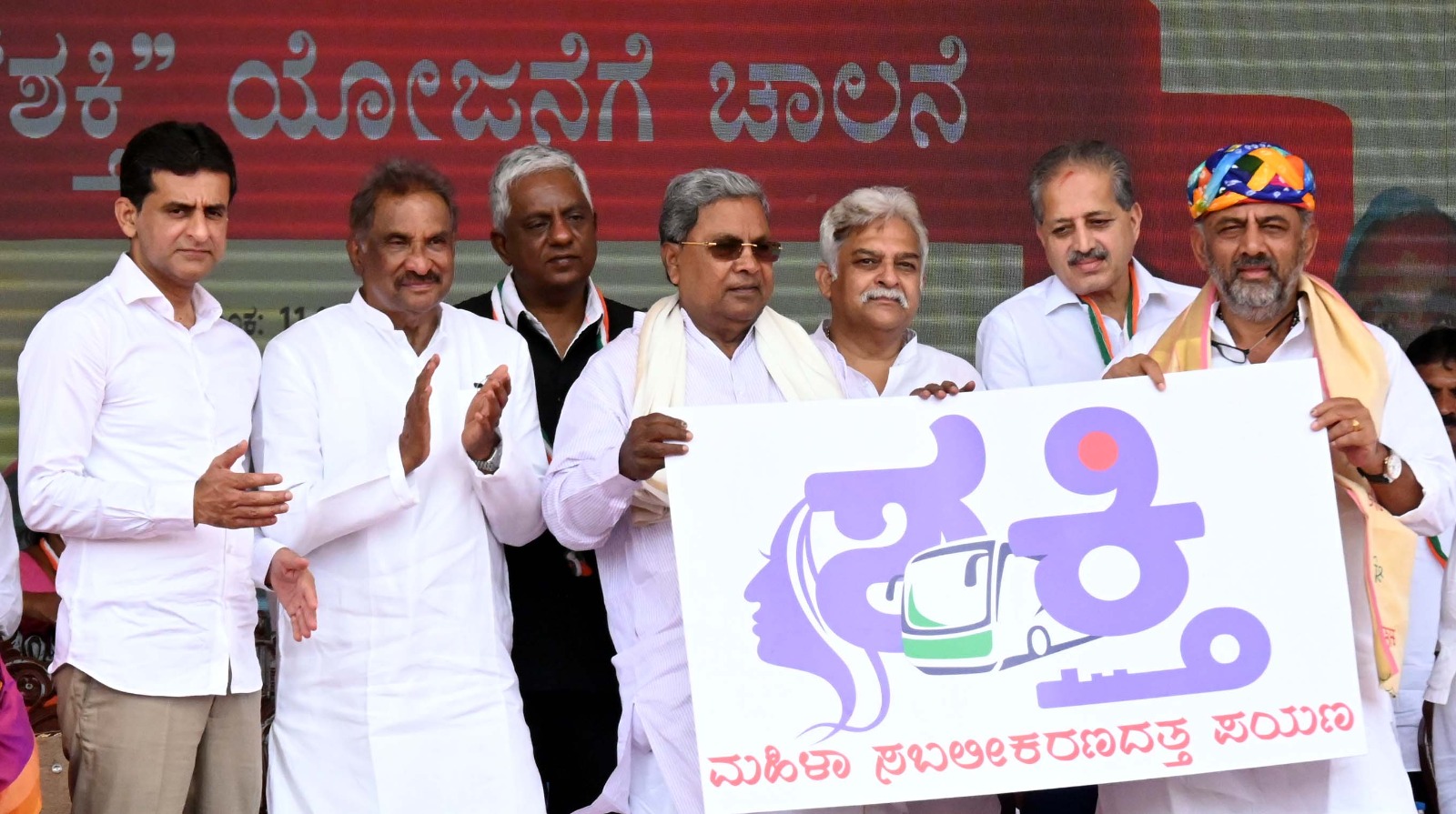Karnataka Congress government has not dithered in redeeming the five pre-poll promises it made. In the budget presented on July 7, it provided ₹39,815 crore for them. This is an income transfer to poor people, especially to women. But the government has also kept a leash on its expenditure. To that extent the boost to consumption from the income transfer will be muted.
Overall, the revenue deficit will rise to 0.49% of the state’s GDP (or GSDP), from 0.27% last year. Since the schemes started after the first quarter, the full year’s impact will be felt next year when the tab will rise to nearly ₹60,000 crore.
The government expects tax revenue to fetch an additional ₹32,000 crore—assuming that GSDP will grow nominally (or non-inflation adjusted terms) by 18%, lower than the 27% growth in 2021-22. It is extracting more from the tax categories that are already squeezed. Tax on sale of alcohol will yield ₹36,000 crore by way of state excise duty, up 12.5% over revised estimates of last year. Liquor in Karnataka was expensive before the budget. A popular brand called Blender’s Pride costs ₹930 per pint (750 ml) in Delhi, retailed for ₹1,860 in Karnataka before the budget, will now cost ₹2,150. Stamps and registrations, motor vehicles and motor fuels also have higher tax rates imposed on them.
The outlay on the five schemes—free electricity up to 200 units a month; a monthly payment of ₹2,000 to poor families headed by women; an unemployment allowance of ₹3,000 and ₹1,500 a month to those graduating or securing diplomas in 2023 for up to two years or till they find jobs, whichever is earlier; an extra 5 kg of rice per person per month or cash equivalent to those in poverty; and free bus travel for women in state bus corporations—will consume 23% of the state’s own tax revenue. There are other subsidies on milk and electricity for agricultural pumps, which will claim another 26% of tax revenue. One casualty has been capital expenditure, which has got a reduced outlay in the current fiscal.
One had expected the government to economise, say, by imposing a distance limit on the rides so that they would be used mostly for employment-related travel. The Congress Party had said during election campaigning that the purpose of free bus rides was to draw more women into employment.
In Delhi, which launched free bus rides for women in October 2019, travel distances are short. Much of the travel is likely to be work related. In his Budget speech in March, Chief Minister Arvind Kejriwal said women had made 100 crore trips since launch of the scheme. He asserted that it has increased women’s participation in the workforce and opened “new gateways of education for many of them.”
Tamil Nadu has restricted free travel for women to government-run buses and up to 30 km in cities and towns. The Zero Ticket Bus Travel (ZTBT) scheme was launched in May 2021, a day after DMK leader MK Stalin became chief minister.
Tamil Nadu’s Planning Commission Member and professor at Madras Institute of Development Studies, M. Vijaya Baskar said ZTBT was meant to raise women’s participation in the labour force. The Fifth Periodic Labour Force Survey (PLFS) has not borne this out. The Survey released in July 2022, a year after ZTBT was launched, says women’s labour force participation rate (LFPR) was 40.7%. This was 2.3% points lower than during the previous annual survey. Perhaps the post-Covid economic recovery is taking time.
But Chennai women passengers surveyed by the state’s Planning Commission in June 2021 and those of Nagapattinam, Madurai and Tiruppur surveyed in October 2021 claimed an average monthly saving respectively of ₹858, ₹1096, ₹ 800 and ₹766 respectively. Vijaya Baskar says self-employed vendors were breaking even on lower sales.
In his budget speech Karnataka Chief Minister Siddaramaiah, who is also the finance minister, said free bus rides were meant for women to take up employment even in distant places. Unlike Tamil Nadu, development is uneven in Karnataka. There is a lot of intra-state migration. Women have responded enthusiastically to the scheme. In the 28 days between launch of the scheme on June 11 and July 8, 15.57 crore women travelled and the cost of free tickets was ₹368.22 crore as per an official press release. The daily average of 55.62 lakh women passengers has exceeded the projection of 42 lakh when the scheme was formulated.
The government says 1.06 crore households, headed by women, have ration cards linked to Aadhar and active bank accounts. Transfers to them will begin next month.
Since economic liberalisation began in 1991, it was assumed that rising prosperity would lift all boats. The emphasis was on capital expenditure and infrastructure development to boost GDP growth. This is how India, like China, has been able to pull millions of people out of poverty. But trickle down also has limits. Even as India has prospered, those pulled out of poverty seem to be hovering at the edge of it. They have little financial endurance as the mass migration of people from cities to villages during the lockdown of 2020 starkly showed. An income boost will help them eat better and invest in education and skills. It will also address to an extent the serious issue of income inequality. More importantly, it will make the beneficiaries feel wanted and cared for.
It will take some time to measure the impact, if any, of the five poll guarantees that the ruling Congress government has rolled out. The cumulative effects of poverty due to falling income levels and higher cost of living can only be eradicated with the help of social welfare schemes over a sustained period of time.

























